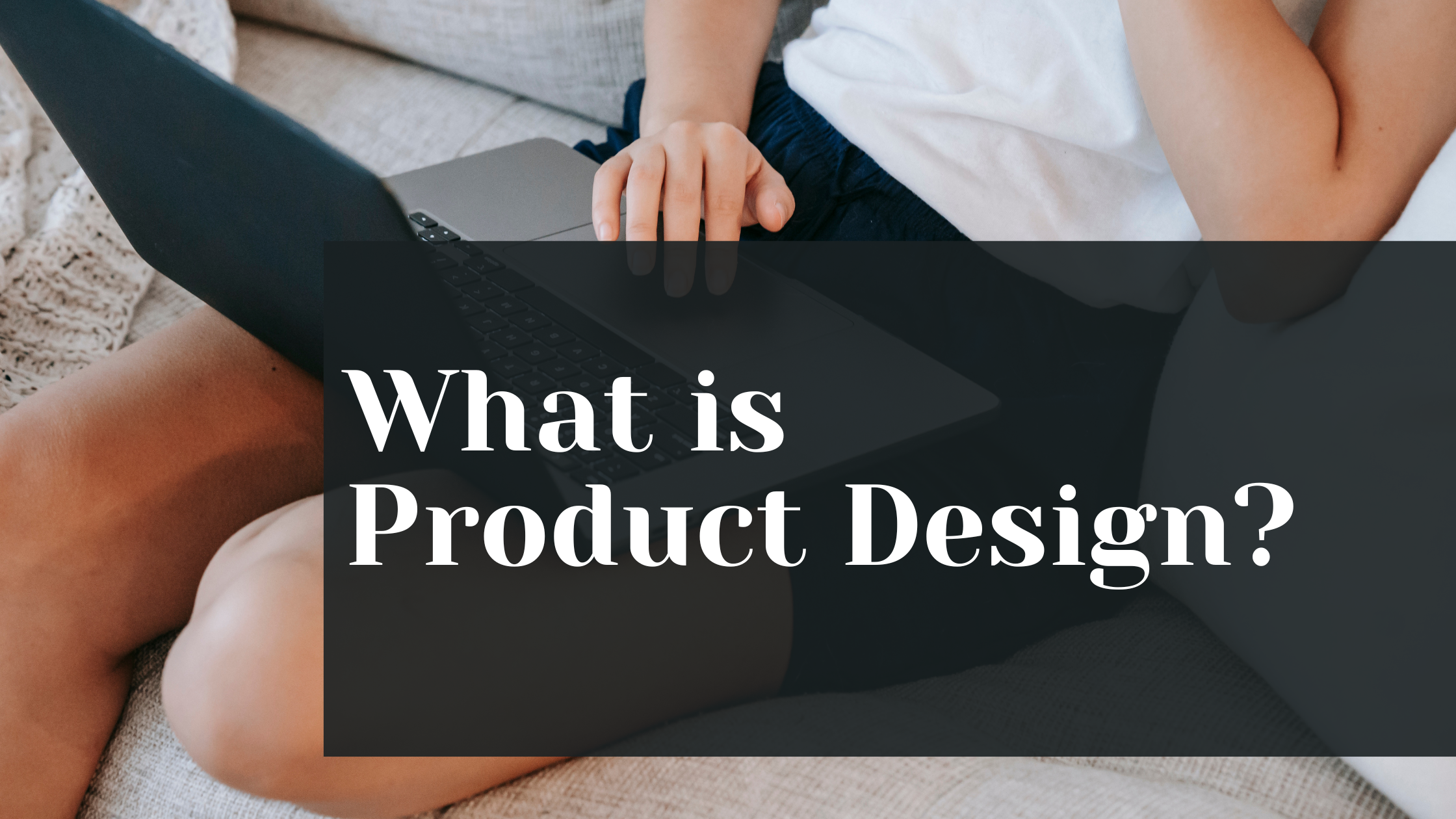What is Product Design?
Product Design: Everything you need to know
When you think about product design, you might picture a sleek, modern coffee shop and the perfectly crafted coffee mug you pick up. The shape fits comfortably in your hand, the material is just right, and the design is visually appealing. But, there is a need to delve more into this. What approach do you ned to take to design a product. Let us explore on more on what is product design and everything that you should know before designing a product. Let’s delve into the world of product design and explore everything you need to know.
Basics
Product design is the process of creating a product that solves needs of the market and provides solutions to the users. It is an art and science that combines engineering, psychology, marketing, and art to create something truly remarkable. Imagine using a smartphone, a kitchen appliance, or even a piece of furniture. Each product has actually gone through a detailed designing process with a sole aim to solve real life problems of people.
The User-Centric Approach
User centric approach is at the centre of approach. Before designing, the designers focus on understanding the needs, desires, and pain points of real users. It’s about putting yourself in the shoes of the users. For instance, if you’re designing a new smartphone app, you wouldn’t start by coding or sketching out the interface. First, you’d conduct user research through interviews, surveys, or observing how people currently use their phones.
Aligning with Market and Business Goals
Understanding the needs of the users is an essential goal to make a good product design. The product design of the startup must also align with business goals and market opportunities. This involves assessing whether the product can be developed with available resources and technology (feasibility) and evaluating its potential for business success (viability).
For example, if you’re designing a new smartwatch, you need to determine if the technology is available to make it happen and if there’s a market demand for such a product. You also need to think about how it fits into your company’s overall strategy and how it will contribute to your bottom line. I’ve seen companies fail because they overlooked this step, so it’s essential to get it right.
The Process of Product Design
So, what does the product design process look like? Here’s a step-by-step guide:
Defining the Product Vision
You start by defining the product vision. This is where you establish the overall direction and goals for the product. What problem are you trying to solve? What needs are you trying to meet? This phase is critical because it sets the stage for everything that follows.
Product Research
Next, you conduct market research, competitor analysis, and user research. This phase is all about gathering data and insights that will inform your design decisions. I remember a project where we spent months researching the market and competitors before we even started designing. It was time-consuming, but it paid off in the end.
User Analysis
Here, you delve deeper into understanding your target audience. Who are they? What are their pain points? What are their goals and aspirations? This phase helps you create a user persona that guides your design decisions.
Ideation
This is the fun part – generating ideas for solutions. Designers use techniques like brainstorming, mind mapping, and sketching to come up with innovative ideas. I love this phase because it’s where creativity really shines.
Design
Now it’s time to create and refine the product design. This includes UX/UI design, where you focus on the usability and visual appeal of the product. Remember, good design is not just about looks; it’s about functionality and user experience.
Testing and Validation
Once you have a prototype, it’s time to test it with real users. This phase is crucial because it helps you validate your design decisions and make necessary adjustments.
Post-launch Activities
After the product is launched, the work doesn’t stop. You continue to iterate and refine the product based on user feedback and performance data. This phase is ongoing and requires continuous improvement.
Key Elements and Principles
When designing a product, several key elements come into play:
- Desirability: Is the product appealing and does it meet user needs?
- Feasibility: Can the product be developed with available resources and technology?
- Viability: Does the product have the potential for business success?
- Functionality: Does the product work as intended and meet user needs?
- Aesthetics: Is the product visually appealing?
- Quality: Is the product of high quality and reliable?
- User Experience (UX): Is the overall user experience positive, including usability and satisfaction?
Collaboration and Roles
Product design is a team effort. Here are some of the key roles involved:
- Product Management: Responsible for developing the product vision, understanding user needs, and ideating product features.
- Engineering: Involved in the development and execution of the product.
- UX/UI Design: Focuses on the usability, look, and user experience of the product.
- Customer Experience: Ensures the product aligns with overall customer experience goals.
Each role brings a unique perspective, and collaboration is essential for creating a successful product. I’ve worked on projects where the team was so cohesive that it felt like we were all speaking the same language.
Why Product Design Matters
Some reasons to design a good product are:
Solving User Problems
Product design is all about solving real problems for real people. When you create a product that meets user needs, you build trust and loyalty. I recall a client who was struggling with a complex software interface. After we redesigned it to be more intuitive, their user satisfaction skyrocketed.
Filling Market Gaps
By understanding market opportunities, you can create products that fill specific gaps in the market. This helps you stand out from the competition and attract new customers. For instance, when Apple introduced the iPhone, it revolutionized the smartphone industry by filling a gap that no one knew existed.
Achieving Business Goals
Product design aligns with business goals, ensuring that the product contributes to the company’s overall strategy and success. A well-designed product can be a game-changer for any business.
Staying Competitive
In today’s fast-paced market, staying competitive is crucial. Product design helps you innovate and stay ahead of the curve. For example, companies like Tesla and Amazon are prime examples of how innovative product design can keep you ahead in the market.
Enhancing Brand Awareness and User Experience
When you create products that people love, you enhance your brand’s reputation and build a loyal customer base. For instance, brands like Apple or Nike – their products are not just functional; they’re experiences that people cherish.
Real-World Examples
Let’s look at some real-world examples of successful product design:
- Apple iPhone: The iPhone transformed the smartphone industry with its sleek design, intuitive interface, and innovative features.
- Tesla Electric Cars: Tesla’s electric cars combine sustainability, technology, and aesthetics to create a product that stands out.
- Amazon Echo: The Amazon Echo is a smart speaker that has become a staple in many homes due to its simple yet effective design.
Tools and Software
Designers use various tools and software to bring their ideas to life. Here are some popular ones:
- Sketch: A digital design tool for creating wireframes, prototypes, and high-fidelity designs.
- Figma: A cloud-based design tool that allows real-time collaboration.
- Adobe XD: A user experience design software that integrates with other Adobe tools.
- InVision: A platform for designing, prototyping, and testing digital products.
Challenges and Opportunities
Some challenges and opportunities to design a product are:
- Balancing User Needs and Business Goals: Sometimes, user needs and business goals can conflict. Finding a balance between the two is crucial.
- Staying Up-to-Date with Technology: Technology is constantly evolving, and designers need to stay current to create innovative products.
- Managing Feedback and Iteration: Design is an iterative process, and managing feedback from users and stakeholders can be challenging.
Conclusion
Product design is a fascinating field that combines creativity, technology, and business acumen. If you understand user needs, align with business goals and use right tools and techniques, designers can create those type of products that can make a real difference to the lives of people.
The next time you pick up a well-designed product, remember the hard work and dedication that went into creating it. It’s not just a product; it’s an experience designed to make your life better.
You can read more information related to Startup advise, AI and startup news here.
Happy designing!
FAQs related to Product Design
1. What is Product Design?
Product design is creating products that meet user needs and business goals.
2. Why is User Research Important?
User research helps designers understand what users need and want.
3. What are the Main Stages of Product Design?
The stages include defining the vision, researching, analyzing users, ideating, designing, testing, and iterating.
4. What is a Product Specification?
A product specification lists the features and requirements of the product.
5. Why is Prototyping Important?
Prototyping helps test the product before final production to avoid errors.
6. What is UX/UI Design?
UX/UI design focuses on making the product easy to use and visually appealing.
7. How Do Designers Manage Feedback?
Designers gather user feedback and make changes to improve the product.
8. What is a User Persona?
A user persona is a profile of a typical user to help designers understand their needs.
9. What’s the Difference Between UX and Product Design?
UX design focuses on digital user experience, while product design covers the entire product experience.
10. How Do Designers Collaborate?
Designers work with other teams like product management and engineering to ensure alignment.
11. What Tools Do Designers Use?
Designers use tools like Sketch, Figma, Adobe XD, and InVision for design and collaboration.
12. What Makes a Product Design Successful?
Success comes from desirability, feasibility, viability, functionality, aesthetics, quality, and good UX.
13. How Do Designers Define the Product Vision?
The vision is defined by identifying market opportunities and setting clear objectives.
14. Why is Testing Important?
Testing ensures the product works well and meets user needs.
15. How Do Designers Hand Off to Developers?
Designers share final designs, assets, and specs with developers and ensure feedback loops.
16. What Are Common Challenges in Product Design?
Challenges include balancing user and business needs, staying updated with technology, and managing feedback.
17. How Do Designers Measure Success?
Success is measured using KPIs like user satisfaction, cycle time, and market performance.
18. What is Human-Centered Design?
Human-centered design focuses on understanding users and their needs to create effective solutions.
19. How Do Designers Align with Business Goals?
Designers work closely with product management and marketing to ensure the product meets business objectives.
20. What is the Role of Iteration in Product Design?
Iteration involves continuously refining the product based on user feedback to keep it competitive.
Thanks






